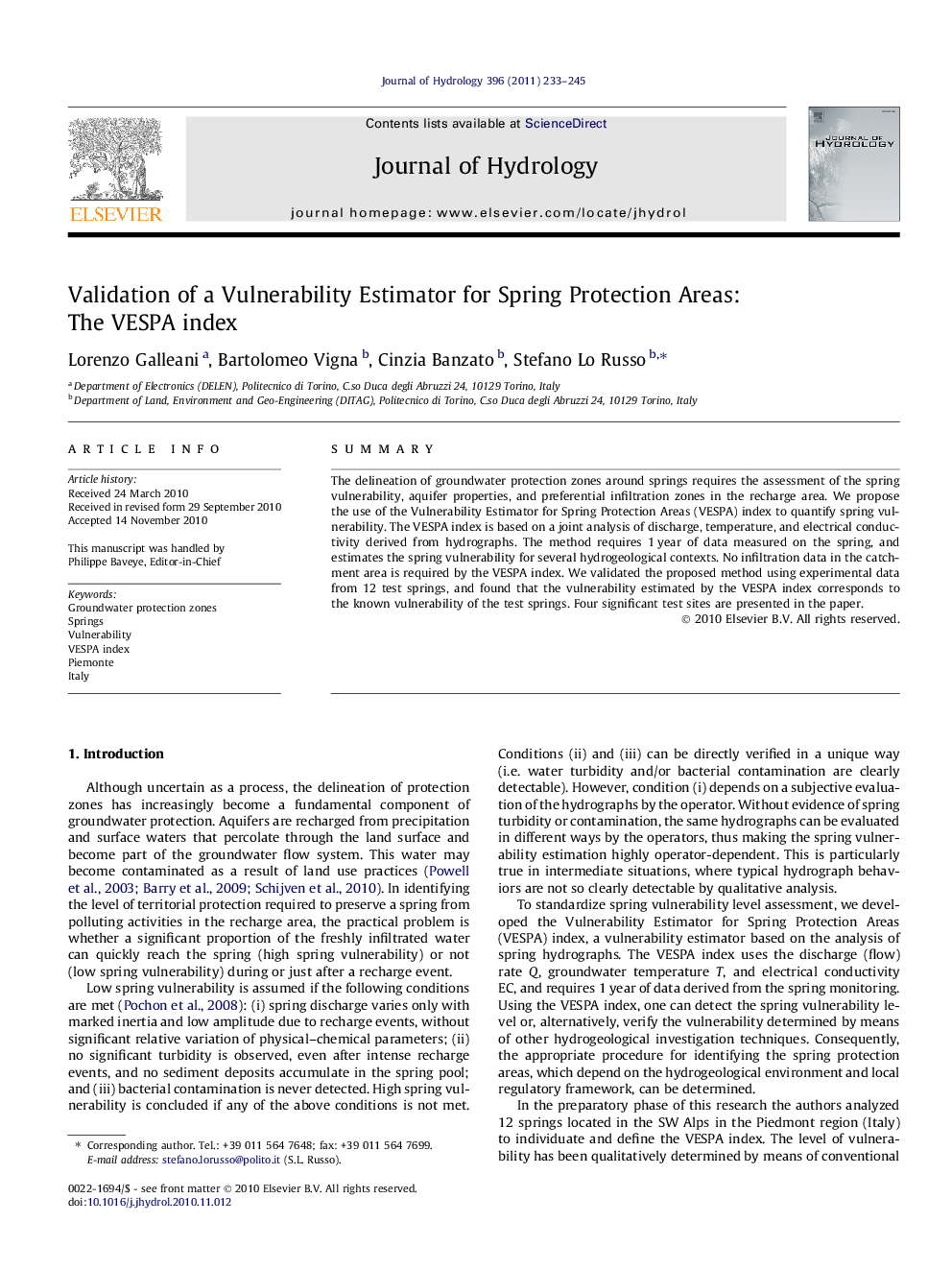| Article ID | Journal | Published Year | Pages | File Type |
|---|---|---|---|---|
| 4577888 | Journal of Hydrology | 2011 | 13 Pages |
SummaryThe delineation of groundwater protection zones around springs requires the assessment of the spring vulnerability, aquifer properties, and preferential infiltration zones in the recharge area. We propose the use of the Vulnerability Estimator for Spring Protection Areas (VESPA) index to quantify spring vulnerability. The VESPA index is based on a joint analysis of discharge, temperature, and electrical conductivity derived from hydrographs. The method requires 1 year of data measured on the spring, and estimates the spring vulnerability for several hydrogeological contexts. No infiltration data in the catchment area is required by the VESPA index. We validated the proposed method using experimental data from 12 test springs, and found that the vulnerability estimated by the VESPA index corresponds to the known vulnerability of the test springs. Four significant test sites are presented in the paper.
Research highlights► The delineation of spring protection zones requires the assessment of the spring vulnerability. ► We develop the VESPA index to quantify spring vulnerability. ► VESPA processes discharge, temperature, and electrical conductivity monitoring data. ► No infiltration data in the catchment area is required by the VESPA index. ► Results prove the effectiveness of the VESPA vulnerability estimates.
